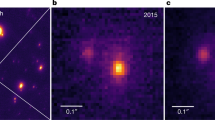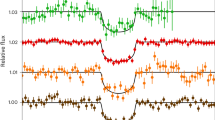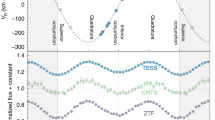Abstract
BRACEWELL1 has recently proposed detection of planetary companions to nearby stars by means of a spinning IR interferometer. In particular, he notes that at far IR wavelengths, the emissivity ratio of the planet to the star increases by five orders of magnitude over equivalent values in the visible. I point out here that more than another three orders of magnitude in sensitivity is gained by choosing white dwarfs as the observational objects, which may permit detection of jovian or black dwarf companions by direct photometry from a space telescope with photon-limited, far IR detectors.
This is a preview of subscription content, access via your institution
Access options
Subscribe to this journal
Receive 51 print issues and online access
$199.00 per year
only $3.90 per issue
Buy this article
- Purchase on SpringerLink
- Instant access to full article PDF
Prices may be subject to local taxes which are calculated during checkout
Similar content being viewed by others
References
Bracewell, R. N. Nature 274, 780–781 (1978).
Paczynski, B. Acta astr. 21, 417–435 (1970).
Graboske, H. C., Pollack, J. B., Grossman, A. S. & Olness, R. J. Astrophys. J. 199, 265–281 (1975).
Kumar, S. S. Astrophys. J. 137, 1121–1125 (1963).
Napier, W. McD., & Guthrie, B. N. G. Mon. Not. R. astr. Soc. 170, 7–14 (1975).
Tarter, J. C. Bull. Am. astr. Soc. 8, 517 (1976).
McCook, G. P. & Sion, E. M. A Catalogue of Spectroscopically Identified White Dwarfs (Villanova Univ. Obser., 1978).
Author information
Authors and Affiliations
Rights and permissions
About this article
Cite this article
FAWLEY, W. On the detection of jovian companions to white dwarfs. Nature 279, 622 (1979). https://doi.org/10.1038/279622a0
Received:
Accepted:
Issue date:
DOI: https://doi.org/10.1038/279622a0



